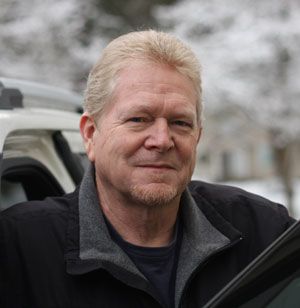Local drivers are commenting
By sending their comments and questions, readers indicate that they are applying thought to their driving. To me, that’s a good thing.
R.H. wondered, “…in driving Spokane’s many one-way streets: Is it lawful for a driver occupying the inside lane on a one-way street to make a free right turn onto another one-way street if a right turn is permitted for both the inside and outside lanes?”
If a the right lane is “turn only” and the adjacent lane is “right only OR right/strait” then yes, drivers may make a “free” right turn upon a red light indication from either lane when cross-traffic is clear. The obverse is true for left turns from a one-way to a one-way.
A.L. asked, “When an emergency vehicle with lights flashing is approaching from behind you are supposed to pull over to the right lane and slow down or stop, but what are you supposed to do if you are on a four or five lane one way street like Appleway or parts of Sprague Ave, and the emergency vehicle is approaching from behind and it’s in the right lane?”
The law is quite specific regarding approaching emergency vehicles. Affected drivers are to move to the right and stop at the curb or shoulder. The idea is to give the emergency vehicle driver a consistent, unambiguous driver behavior to expect while making their own maneuvers.
D.T. inquired, “Is it [a turn signal] required when a lane is marked left (or right) turn only?”
I have asked WSP troopers this question during rides with them. Their consensus is that you should signal when in “turn only” lanes to specify your intention to turn even though turning may be the only option. It’s best to display any signal available to confirm your driving actions to other drivers to help eliminate doubt. The requirement to signal your intention to turn at least 100 feet in advance of turning is always in play.
R.T. gave a caution of a sloppy driving habit by writing, “Having just returned from a long trip, mainly freeway driving, I was reminded about a poor driving habit that most drivers have. I try not to. When changing lanes on the freeway, most drivers do not turn on their turning signal till after they start the change of lanes or at best, at the same time. By then you know someone is changing lanes and the signal is past tense.”
Indeed, the procedure is to signal, THEN turn. Since there is a requirement to signal at least 100 feet before turning, drivers on the freeway should pause a bit after signaling before initiating their lane change.
Regarding mirrors, D.M. noted, “In my experience, most drivers don’t know how to adjust the side-view mirror in their automobile. They don’t know the side-view mirror is to be adjusted to see the car that is approaching on either side of them and is in their blind spot.”
D.M. is right that many drivers don’t properly adjust side mirrors. It would be fortuitous if they did, and even better if they regularly monitored them!
And D.M. added, “If you ‘Google’ adjusting automobile side-view mirror, you will get more than a dozen links to that procedure. I thought [one of them] was interesting because it followed with a lot of interesting driver’s comments. Most of the respondents were surprised there was a procedure for this adjustment!”
Readers may contact Bill Love via email at precisiondriving@spokesman.com.
